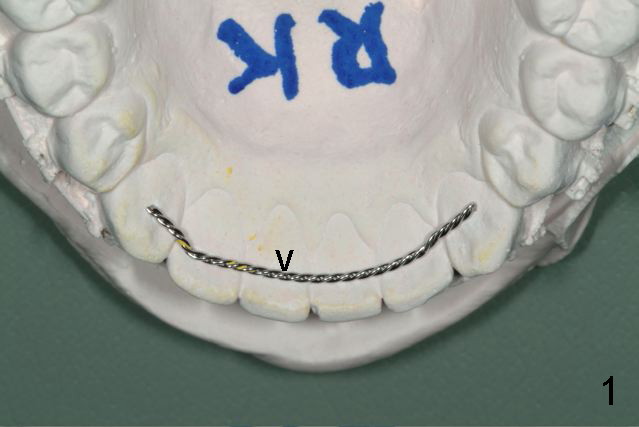
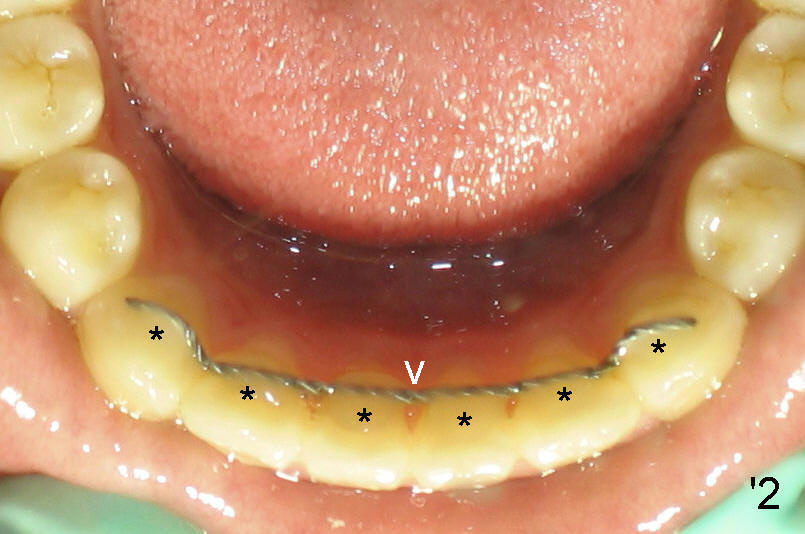
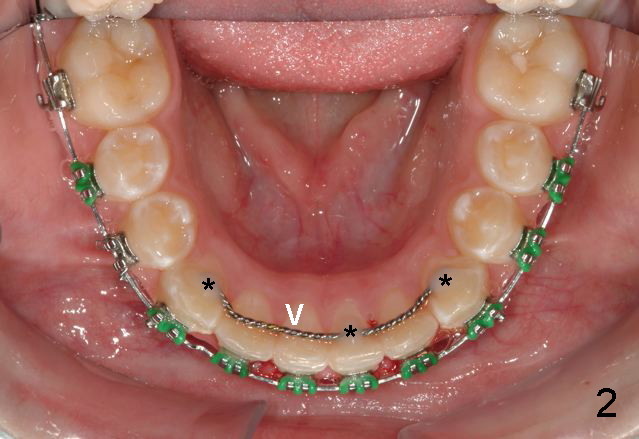
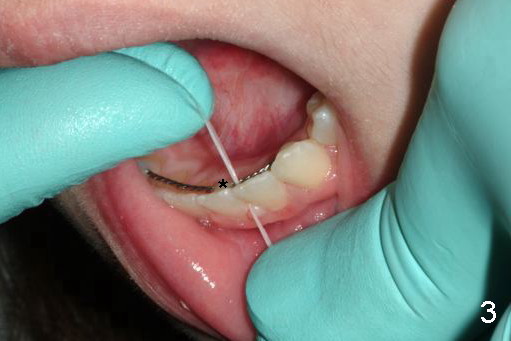
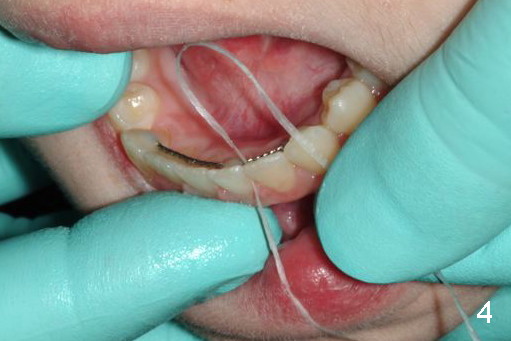
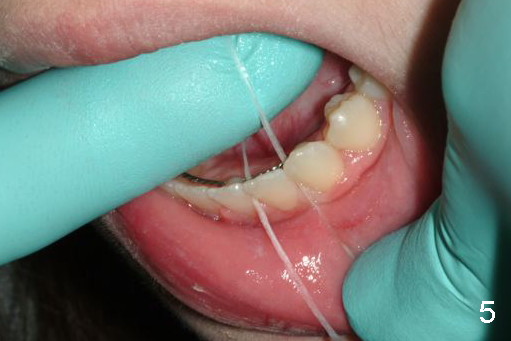

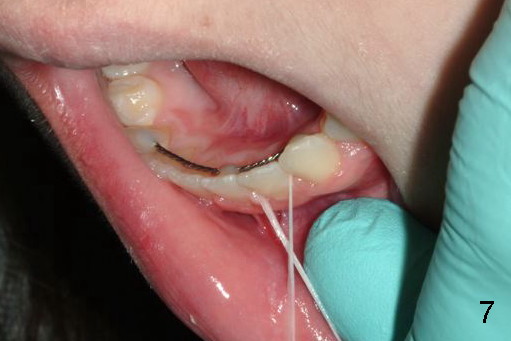
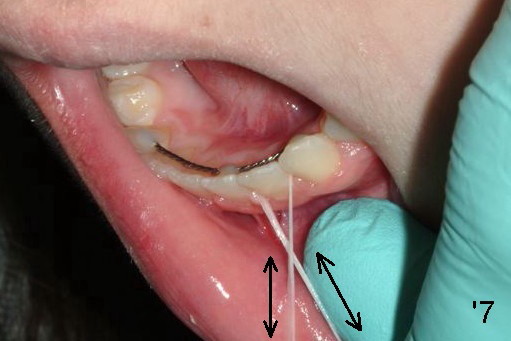
 |
 |
 |
 |
 |
 |
 |
 |
 |
How to Fabricate and Floss a Lower Fxed Retainer
The method is proposed by Dr. Tim Shaughnessy, orthodontist. He practices in John Creek, Georgia.
When brackets and bands are removed, retainers should be fabricated to prevent relapse. There are two types of retainers. One is removable, the other fixed. It is hygienic for the removable retainer, but if the patient does not wear it on regular basis, relapse is likely. By contrast, the fixed lingual retainer is more reliable in prevention of relapse, stay in our mouth and are bonded to the teeth (Fig.1,2 arrow, wire). The teeth do not move easily, but it is difficult to clean them, especially with dental floss.
The traditional fixed retainer wire (Fig.'2 arrowhead) is bonded to every one of six lower front teeth (*). Dr. Shaughnessy has introduced a new design of the fixed retainer so that we can floss around it. In the new design, the fixed retainer is bonded to some of the bottom teeth (Fig.2 *, before braces are removed). To floss, slide a piece of floss between the teeth (Fig.3), turn the floss around the tooth without being bonded (Fig.4), and slide the other end of the floss into the next space (Fig.5,6). Last push the floss down past the wire and cross the ends of the floss (Fig.7) and move back and forth (Fig.'7 double arrows) and up and down.
Question for Dr. Shaughnessy: I really love your way of bonding of lingual retainer and flossing. May I post these photos for patients' education? Will those teeth without bonding relapse in a while?
Answer: Anything of mine is yours Xin. You are welcome to use any of my photos. I am always afraid lower incisors will try to migrate with time. I can even show you how I place the retainers. I have a trick for that also. I know you are not surprised!
Question: For severe crowding case, do we have to bond every single incisor to prevent relapse? Can you show me the trick you mentioned? I do not mind traveling to your office to learn. Implantologists recommend the same way of flossing as you do for the retainer.
Answer: Yes I lean toward smaller gauge wire and bond every tooth if severely crowded, periodontally compromised (like a splint), or initial spacing.
Xin Wei, DDS, PhD, MS 1st edition 03/02/2013, last revision 10/14/2017